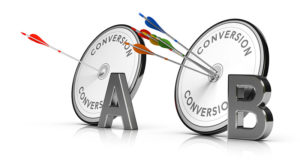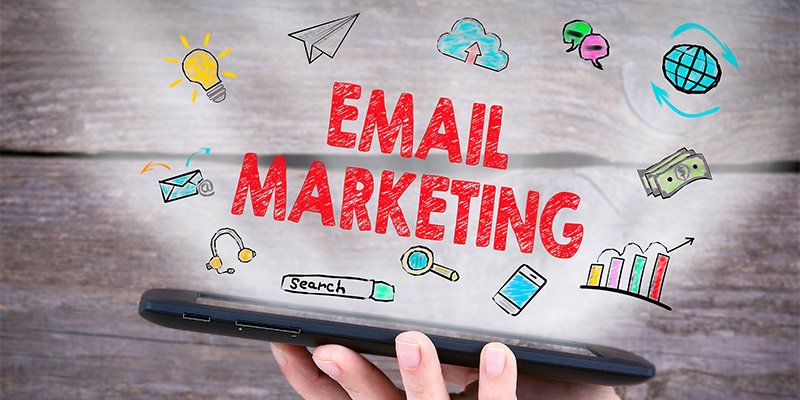With over 3.9 billion active email users worldwide, email is a powerful marketing channel that can help businesses grow. If the intricacies of email marketing are still confusing for you, don’t worry. Here’s a step-by-step guide that will help you create an email marketing strategy for your business.
Why You Need an Email Marketing Strategy
Before creating email campaigns for your business, here are some essential details about email marketing that you need to know.
What Is Email Marketing?
Email Marketing Definition. Email marketing is a specific type of digital marketing or internet marketing that uses emails to achieve specific goals, such as brand awareness, lead generation, and customer engagement.
Rather than traditional direct marketing — where promotional materials were sent through traditional mail — businesses can now use email to update customers about new products and services, provide content that keeps customers engaged, and promote incentives that foster customer loyalty. When done correctly and strategically, email marketing can become an integral part of your digital marketing strategy. Sesli sohbet
What Are the Three Types of Emails?
There are countless types of emails used for digital marketing but they can be segregated into three main categories: transactional, relational, and promotional.
Transactional Emails
A transactional email is a one-off message typically sent after a user has performed a certain action on your website. The most common types of transactional emails are account creations, order confirmations, purchase receipts, shipping notifications, delivery notifications, password reminders, support tickets, payment status updates, failed payments, and order refunds.
Transactional emails do not contain promotional messages. Instead, they contain information that is essential for customers. That is why transactional emails tend to have a high open-rate.
Relational Emails
A relational email contains content or information that your subscribers will find valuable or helpful. Rather than selling products or services, the goal of relational emails is to build relationships with subscribers and customers.
The most common types of relational emails are welcome messages, newsletters, blog articles, product information videos, product-related tips, social updates, surveys, referral requests, and contest announcements.
Relational emails are sent regularly, and often as a series of emails because it takes more than one email to nurture relationships with your subscribers.
Promotional Emails
 Promotional emails are most commonly used for email marketing. The goal of promotional emails is to make an offer that will convince subscribers to perform an action on your website.
Promotional emails are most commonly used for email marketing. The goal of promotional emails is to make an offer that will convince subscribers to perform an action on your website.
Examples of promotional emails include new lead magnets, sale announcements, discount codes, trial offers, upgrade offers, and event announcements.
Businesses can send promotional emails to their entire list or create targeted emails based on their interests, needs, or other information that you have about them. Establishing buyer personas is crucial in creating promotional emails that are relevant to your subscribers.
What Are the Advantages of Email Marketing?
About 87 percent of businesses use email marketing because of its effectiveness at nurturing subscribers or leads. Here are other benefits that you can experience after implementing an email marketing strategy.
1. Lower Marketing Expenses
Low cost is one of the advantages of email marketing. It doesn’t cost anything to send an email. Most businesses will have to invest in email marketing software to send a large volume of emails at any given time, as well as to access essential features such as automation and reporting tools.
However, the cost is still relatively lower compared to the costs of sending direct mail, including printing and postage. In terms of manpower, you don’t need to hire an entire team for email marketing. Small businesses can get by with a single, dedicated employee for email marketing.
2. Increase Customer Engagement and Loyalty
Email marketing already allows businesses to communicate with people who are most interested in your brand. The ability to send targeted promotional emails can further increase customer engagement and loyalty. Rather than generic emails broadcasted to the entire list, subscribers are more likely to open emails that are relevant to them or provide some value in their lives. Higher open rates will make your marketing efforts more effective.
3. Higher Search Rankings
Email marketing can boost a business’s other digital marketing strategies. By creating emails with compelling copy and a call-to-action (CTA), you can drive more traffic to your website. This, in turn, improves SEO. With higher search rankings, businesses have more chances of attracting consumers and turning them into leads and/or customers.
4. Boost Revenues
Email marketing has an excellent return on investment (ROI). For every $1 spent, businesses can see an average ROI of $42. Businesses can see up to a 760% increase in revenues compared to those that do not have an email marketing strategy. As such, investing in email marketing is worthwhile as it can help boost the revenues of your business.
5. Measurable and Actionable Results
Businesses can actively monitor the performance of their email campaigns by looking at key metrics such as open rates, click-through rates, conversion rates, and unsubscribe rates. What’s great about email marketing is that you can also quickly implement changes. If an email campaign is not converting as expected, you can make changes to improve its performance — thereby ensuring the success of your campaigns.
6. Ease of Use
 One of the best things about email marketing is that it is easy to use. You don’t need a huge team or expansive technical expertise in emails.
One of the best things about email marketing is that it is easy to use. You don’t need a huge team or expansive technical expertise in emails.
As long as you get the basics down, you will be able to create and implement email campaigns successfully.
Email marketing software can also be very useful as they typically have customizable templates, emailer samplers, automation and segmentation capabilities, and robust reporting features.
How to Create an Email Marketing Campaign
Want to learn how to do email marketing? Just follow the steps for creating an email marketing strategy plan.
Step 1. Establish Your Email Marketing Goals
Establishing goals is the first step in creating an email marketing strategy. What do you want to accomplish with your email campaigns? Some examples of email marketing goals would be increasing brand awareness, boosting engagement, segmenting subscribers, driving website traffic, and increasing sales. After establishing email marketing goals, identify key performance indicators (KPIs) that you will then use to measure the effectiveness of your campaigns.
Step 2. Choose an Email Marketing Software
An email marketing software is essential if you want to send up to thousands of emails per day. It will also make running email campaigns easier due to robust features like automation, segmentation, and reporting. Popular email platforms include MailChimp, Active Campaign, Constant Contact, AWeber, Infusionsoft, and iContact. Choose a software provider that meets your email marketing goals and your budget.
Step 3. Build and Segment Your Email List
Now that you have goals set in place, it’s time to build your organic email list. For existing customers, you can import their contact information into your email marketing software.
Meanwhile, to attract new subscribers, you can implement several strategies such as creating optimized landing pages with free but valuable lead magnets; offering incentives such as discounts and free shipping via website capture forms; and optimizing content with relevant keywords, compelling content, and actionable CTAs.
As you build your email list, make sure that you are also actively segmenting them based on the information they provide. For instance, you can segment subscribers based on their demographics, location, purchase history, engagement level, interests, and needs.
Step 4. Produce Emails for Your Campaigns
You need to plan ahead if you want a successful email marketing strategy. It will take some time to produce emails for different campaigns. Here are some guidelines for email content.
- Subject Line: Use subject lines that are sure to catch your subscribers’ attention. Limit titles to 40-50 characters to ensure readability across devices. You can effectively call out your subscribers by including their name or addressing a pain point that they may have.
- Email Content: When writing your email marketing copy, start with a striking sentence that will keep subscribers hooked. Keep sentences simple and concise. Rather than overselling your products and services, focus on the benefits. Emphasize the ways that your business can help improve their lives. This strategy can lead to more conversions compared to a hard sell.
- Call to Action: After engaging subscribers with compelling copy, make sure that the email has a strong and actionable CTA. What do you want subscribers to do after reading your email? Depending on your email marketing goal, it could be to click on a blog post or a product page.
- Footer: The footer is a great way to direct traffic to your other online channels. You can include your contact information, your website URL, and social media accounts. Anti-spam laws may also require you to have an opt-out link.
- Email Design: The overall look of your email can also influence engagement and conversions. A design aesthetic that is consistent with your brand can increase brand awareness. You also want your emails to have readable text, optimized images, and fast loading speed. Mobile compatibility is crucial since most of your subscribers will be reading your emails through their devices. If you do not have a web developer, some email marketing platforms have customizable templates that you can use.
Step 5. Review and Test Your Email Campaigns
 Before publishing your emails to subscribers, send them to yourself or your email marketing team. This is an opportunity to check your email content and make sure that everything is loading quickly and properly.
Before publishing your emails to subscribers, send them to yourself or your email marketing team. This is an opportunity to check your email content and make sure that everything is loading quickly and properly.
It’s also important to conduct A/B testing to see which subject lines and CTAs result in higher open rates and conversions. You can perform this step throughout your email campaigns for better success rates.
6. Create Email Autoresponder Series
Automation is one of the benefits of using email marketing software. Since it can be time-consuming to send email campaigns to each subscriber, an autoresponder series will automate the process. You can establish triggers and set schedules for sending emails to your list.
For instance, the moment a user subscribes to your list, they will be sent a welcome email. If they made a purchase, they will receive an order confirmation or receipt. If they opted for a lead magnet, your autoresponder series will immediately send them the download link via email.
Meanwhile, you can also onboard promotional emails and have them sent on certain days or times. Automation will make it easier for your team to create and implement email marketing strategies.
7. Monitor Your Email Campaigns
Monitoring email campaigns is a must if you want to see whether they are effective or not. It also provides you information that you can use to improve future email campaigns. The important metrics to keep track of include open rates, click-through rates, bounce rates, unsubscribe rates, conversion rates, list growth rates, spam complaint rates, email sharing rates, overall ROI, and revenue per email.
You can also use email metrics to weed out unengaged subscribers. A large email list is no good if it’s full subscribers who do not open emails and engage with your business.
Email Marketing Best Practices for Your Business
Here are the best marketing tips and strategies that can further shape your email marketing strategy:
Do Not Buy Email Lists
As tempting as it may be to quickly increase your subscriber base, do not buy your email list. There’s no guarantee that these subscribers will be interested in your business. If they do not open emails or worse, mark them as spam, email service providers may penalize your business.
It’s much better to build an organic email list slowly but surely. You can leverage lead magnets, discount codes, free shipping, and other incentives to encourage consumers to sign up for your list. At least you’ll be sure that you are marketing to an audience that is interested in your products and services.
Only Send Emails When You Need To
 Just because subscribers have joined your list doesn’t mean that you should email them whenever you want. Flooding inboxes with irrelevant emails will just frustrate or irritate your subscribers.
Just because subscribers have joined your list doesn’t mean that you should email them whenever you want. Flooding inboxes with irrelevant emails will just frustrate or irritate your subscribers.
This can make them lose interest in your business and unsubscribe from your list. Spamming inboxes can even get you in trouble with the law, as per the CAN-SPAM Act.
Businesses must strive to send relevant and engaging emails to keep subscribers engaged. Also, it’s helpful to have some variety in your emails. Only sending promotional emails can send the wrong message to your subscribers. Make sure to send emails that encourage conversation with your customers, such as appreciation, goodwill, and feedback emails.
Personalize Your Email Campaigns
Personalized emails, such as including subscribers’ first names, can drastically improve your open rates. Use the information you have about your subscribers to add personal touches to your marketing emails, as well as create targeted emails. It will be easier to build relationships with subscribers if they see a more human element to your brand as compared to companies that just send generic emails.
Create an Email Marketing Calendar
As your email list grows, the harder it will be to keep up with different email campaigns. It’s important to touch base with your subscribers regularly so that they are continuously engaged. If you miss out on sending marketing emails, it will be harder to convert your subscribers. To keep track of everything, make sure that you have an email marketing calendar. This will help you organize your email campaigns and plan out your content well in advance.
Getting Started on Your Email Marketing Strategy
There’s a lot to learn about email marketing but there’s no need to be overwhelmed. Just follow the steps outlined to get started on your email marketing strategy. With time and experience, it will be easier to implement email marketing strategies that result in fantastic outcomes for your business.
Need a professional email marketer to guide your campaigns? Don’t hesitate to reach out to the Tanner Grey team today! Email us at web@tannergrey.com, call us at 844.500.1339, or contact us online to discover more about our email marketing services.
RELATED ARTICLES:
- The Most Important Forms Of Digital Direct Marketing
- 9 Brilliant Tips To Build Brand Awareness Online
- The Importance of Digital Marketing in the Modern Era




